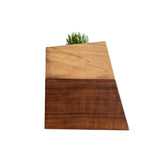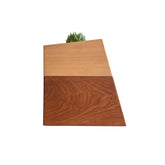Graves, Prayer Customs, Wish Jewellery, and the Beliefs in Blessings and Rebirth

We’ve travelled through many countries, and China left the deepest mark on us. It’s a fascinating place: thousands of years of history sit quietly under modern life, and you can feel a deep, layered culture almost everywhere you go. China’s progress in recent years is clear to see, and there’s a lot the rest of us can learn from it.
This article looks at how Chinese ideas about ancestors, feng shui and the afterlife weave into everyday life. We focus on how people choose burial sites with feng shui in mind, how prayers and wish jewellery support both the departed and the living, and how beliefs in blessing and rebirth shape daily practice. We don’t treat feng shui as “superstition”, but as a cultural craft that ties family memory, moral duty, and the built/natural environment together.
Keywords: feng shui, yin dwelling, burial site selection, ancestor worship, wish jewellery, blessing, reincarnation, continuing bonds

1. A short history: from the “yin dwelling” to family lineage
In Chinese thought, a grave is a “yin dwelling” (for the dead) and the home of the living is a “yang dwelling”. Classic feng shui texts say a person’s resting place can influence the fortunes of their descendants—not as a hard-wired fate, but through bloodline continuity, land stewardship, and the moral duty of filial piety.
Two complementary schools shaped the practice:
- Form School (Xíngshì): cares about landforms—mountain “dragon veins”, protective hills (“sand”), the rear Black Tortoise, the open bright hall in front, and the water mouth.
- Compass School (Lǐqì): cares about facing/ sitting directions, the 24 mountains, time cycles, and the movement and cultivation of qi.
These ideas travelled across regions and dynasties, blending with local customs. Families look for a spot that feels right, faces well, and promises calm continuity. The fact feng shui has lasted for millennia suggests it serves real human needs.
2. Cemeteries and feng shui: what “good” looks like
In practice, a “lucky” site combines environmental safety with a sense of symbolic shelter:
- Backed and embraced: a steady rise behind (a “backing” mountain) and gentle arms on both sides (left Green Dragon, right White Tiger) to suggest protection.
- Open front with light shelter: a tidy, simple bright hall in front—space for gathering and ritual.
- Welcome water, don’t fight it: slow, winding water or a distant waterscape hints at nourishment and continuity; fast torrents, busy roads or knife-sharp slopes signal disturbance.
- Soft lines, healthy growth: undisturbed soil, stable drainage and balanced trees/greenery show a site that is “settled”, not suffocated.
Fitting orientation: technical rules vary, but most families choose an orientation that feels respectful, peaceful and easy to visit.
Taken literally, these are terrain rules; taken symbolically, they are a language of psychological safety, care across generations, and ecological awareness.
3. Social meaning: more than wealth
Choosing a grave is choosing a family story. It is where filial piety is made visible: descendants tend the site, meet at Qingming, and teach children where they come from. “Good feng shui” often carries:
- Environmental care: stable land and water mean fewer problems.
- Community respect: a well-kept grave signals dignity and belonging.
- Moral economy: zǔyīn (“ancestor’s shade/blessing”) isn’t mere luck; it names gratitude and the duty to pass things on well.
4. Modern adaptations: cremation, urns, and city feng shui
Urban life and policy mean many families now choose cremation, with lawn burials, columbariums, or home altars. Feng shui adapts:
- Cemeteries/columbariums: look for calm layouts, good greenery, easy access and proper upkeep; avoid cramped, noisy corners; if possible, choose light and airflow.
- At home: place the urn and ancestral tablet in a quiet, clean spot (not kitchen or bathroom), on a stable surface with soft lighting. A small plant or bowl of clear water symbolises life. Clean regularly as a sign of care.
- Scattering or “tree/flower burials”: families can place offerings at a chosen spot, turning visits into walks and planting into remembrance.
The principle stays the same: keep dignity, support visits, and choose settings that invite calm reflection.

5. Wishes and wish jewellery: helping the departed and the living
Wishing and dedication connect worlds. In Chinese Buddhism and folk practice, people dedicate merit from good deeds, giving or chanting to the departed, wishing them a smooth path in the next life. Folk customs shaped by Daoism add amulets and daily blessings for the family.
Prayer/wish jewellery—mala beads, mantra pendants, or cremation jewellery that symbolically holds a pinch of ashes or hair—extends the altar into daily life:
- For the departed (belief level): engraving a mantra (e.g. the Six-Syllable Mantra, Om Mani Padme Hum) and reciting while wearing it is seen as “sending” compassion and merit to them.
- For the wearer (psychology): the piece becomes a tactile anchor—something to hold when grief surges—supporting what grief research calls continuing bonds: keeping a healthy, growing relationship with the departed rather than “letting go” all at once.
- Family identity: shared pieces (siblings each wear a bead or pendant) create a small network of rituals that tie birthdays, anniversaries or festivals (Qingming, Ghost Festival) to shared remembrance.
Practical tips for prayer jewellery
- Choose skin-safe, ethically made materials; if worn daily, prioritise durability.
- If ashes are included, seal carefully; treat the piece with respect—avoid messy, unclean places.
- Pair wearing with simple habits: a minute of morning dedication, a short mantra on your commute, evening gratitude.
- Mark the “firsts” (first festival, first Qingming) with family check-ins and shared prayer.
6. Reincarnation and blessing in Chinese belief
Chinese views of the next life are blended:
- Buddhism: the six realms of rebirth; one’s actions (karma) shape future births; family merit and chanting can help guide a better path. Many pray over the 49 days after death.
- Daoism/folk religion: spirits, guardians, amulets and household gods. Bǎoyòu (blessing/protection) names a two-way relationship: descendants care for ancestors; ancestors watch over descendants.
- Confucianism: moral life and filial piety; formal rites teach respect, continuity and social harmony.
Most families mix these: a Buddhist rite here, a Daoist rite there, and daily Confucian manners before the ancestral tablet. Together they form a moral ecology linking action, memory and wellbeing.

7. A practical framework for choosing a resting place
Environment checklist
- Safety first: firm ground, no erosion; check cemetery standards.
- Gentle light: soft daylight and ventilation; avoid harsh sun or wind tunnels.
- Sound & stillness: prefer soft, steady background sounds (breeze, birds) over heavy traffic.
- Water/greenery: ideal is a view of slow water or healthy plants; avoid torrents or “cutting” gullies.
- Access: paths older relatives can manage; parking that doesn’t disturb others.
- Orientation & meaning: choose an orientation that fits family gatherings, not just “rules”.
For home altars and urns
- Keep the space clean; refresh water/flowers often.
- Avoid placing it directly facing doors or mirrors that cause foot-traffic disruption.
- Use warm, soft lighting at night.
For prayer and wearing jewellery
- Set simple times: 1 minute after breakfast; a longer family dedication on monthly anniversaries.
- On yearly anniversaries, pair good deeds (donation, volunteering) with chanting, then dedicate the merit to the departed.
8. Reading feng shui today: from fate to meaning
A healthy modern view is neither magic by the book nor cynical dismissal:
- Environmental psychology: many feng shui guidelines overlap with comfort and safety (back support, shelter, soft light, greenery).
- Family systems: rituals share and structure grief, preventing isolation.
- Cultural symbols: images (mountain/water, dragon/tiger) help families tell a coherent story through loss.
Seen this way, feng shui is a toolkit—moral, aesthetic and practical—for keeping bonds alive across generations.

Conclusion
Chinese customs around ancestors, feng shui, prayer and rebirth fit best when seen as one woven fabric. Choosing a burial place is choosing a calm, welcoming landscape to hold memory. Prayer and prayer jewellery turn memory into daily habit. Belief in blessing and rebirth gives a language for hope and responsibility. When families carry these traditions with care—keeping dignity, tending the environment, and nurturing lasting bonds—the result isn’t just “good luck”, but a grounded way to live with love and loss.







